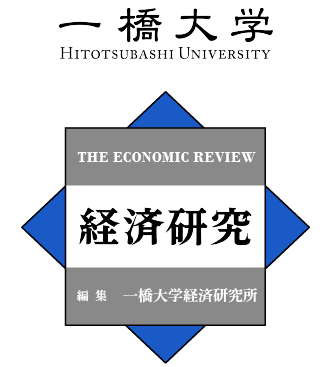Jul. 25, 2020
世代間資産移転と相続税
Intergenerational Transfers and Inheritance Tax in Japan
要旨Abstract
本稿では日本の世代間資産移転の実態とそれに関わる相続・贈与行動を概観し,それが少子高齢化社会のなかでどのような意味を持つのかを検討した.まず,Piketty (2010)の手法を援用し,日本における年間世代間資産移転額を推定した.それによると年間80兆円程度と推計された.次いで,相続税の考え方についてであるが,相続税は大別して,遺産を残す人(被相続人)が納税すると考える遺産税方式と遺産を受け取る人(相続人)が納税義務を負うとする取得税方式に分かれるが,日本では両方の折衷様式である法定相続分方式がとられている.ここではそれぞれの方式の優劣を比較検討し,さらに最近の相続税改革の実態について検討を加えた.その中で,世界の相続税に対する考え方が,相続税を廃止する国から相続税を強化する国までかなり分散していることを明らかにする.それを反映して相続税の理論研究でも,最適相続税率はマイナスから,ゼロ,そして50-60%の高率なものまでさまざまな提案がなされており,学界でも合意形成に至っていない.相続・贈与行動は極めて多様で,かつ長期にわたって観測されるべきものであり,政策立案に用いることのできる統計的エビデンスの蓄積が少なく,あったとしても非公開であることが,理論・実証研究に混乱をもたらしている.今後は,国税庁などの行政機関と協力して,相続行動の実態を解明し,現実に即した相続税制の構築を目指すべきであろう.
This paper explores the amount of intergenerational transfers in Japan, including bequests and gifts, and provide some implications for inheritance and gift taxes. Piketty’s (2011) methodology is employed to estimate annual intergenerational transfers. We found that annually, about 80 trillion yen are transferred, of which 48 trillion are inheritance transfers and 32 trillion are gift. In addition, we investigate the inheritance and gift tax systems in Japan. In doing so, we estimate the elasticity of taxable bequest transfers with respect to the net-of-inheritance tax rate, which falls in the range of 0.077-0.114. Fairly low elasticity implies that the current top inheritance rate of 55% is justifiable. Nevertheless, that tax rate is based on macro (aggregate) time-series data. Hence, studying it requires solid analysis using microdata from the National Tax Agency Japan. Doing so forms the basis for future research.
書誌情報Bibliographic information
Vol. 69, No. 3, 2018 , pp. 206-226
HERMES-IR(一橋大学機関リポジトリ): https://hdl.handle.net/10086/29369
JEL Classification Codes: D12, H24, J14
